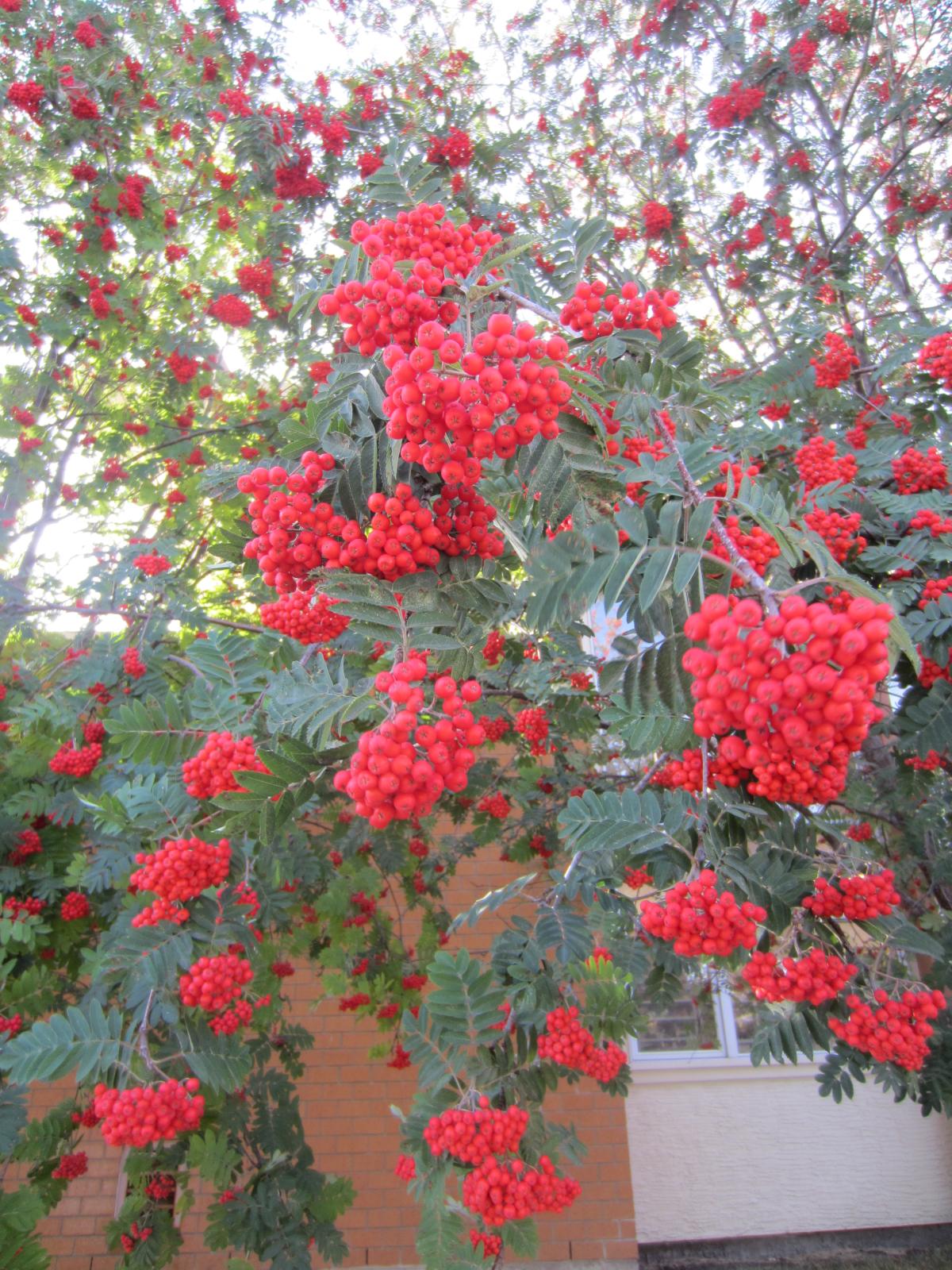
Mountain ash
Sorbus sp.
Mountain ash are not true species of ash, but belong to the rose family. Their closest relatives are the apples and the hawthorns. Contrary to popular belief, mountain ash fruit is not poisonous. Although extremely bitter and unpleasant to humans, they are actually very high in vitamin C and quite nutritious. Birds love them!
After they have been sweetened by several frosts, some people will make mountain ash jelly. The Finns have long used mountain ash fruit in their wine making, both for enriching other flavors and for making the brew especially intoxicating.
Perhaps the most widely grown species of mountain ash is the American mountain ash, Sorbus americana. It comes from the eastern half of North America and grows about 20-30 ft. tall. It is multi trunked as often as it is single trunked, and produces bright green leaves with gray-green undersides. The fruit is brilliant red and autumn color is usually golden through yellow through orange. The dark, reddish brown bark is quite lovely in winter, as are the black buds. Hardy to zone 2.
This tree was very important to American indigenous peoples who used the buds and inner bark as a tonic to treat depression and general weakness. Poultices made from the bark were used for boils, and steam from the boiled branches was inhaled to relieve headaches, colds, and to make childbirth easier. The fruits were used to make a tea for relieving sore throats and tonsillitis.
A number of cultivars have been developed, perhaps the most noteworthy of which is ‘Red Cascade’. This is a very compact form reaching about 25 ft. and producing exceptionally large clusters of brilliant red berries.
Long considered the most desirable and hardiest species, the showy mountain ash (Sorbus decora) is well deserving of all of the accolades it receives. Ranging from Greenland and Iceland into much of the northeastern corner of North America (including southeastern Manitoba), this species is rather slow growing but worth waiting for. Reaching as tall as 30 ft. in height under cultivation, it is often much smaller and shrubbier in the wild. It produces huge clusters of stunning red or orange fruits and has perhaps the longest lasting and most incredible display of autumn color of any species. Depending on weather, the color can range from red to gold to orange or anything in between, often with strong shadings of purple.
The Russian mountain ash (Sorbus aucuparia var. rossica) is slower growing and more upright than the species, and the fruit clusters are also larger. As anyone who has cultivated these trees will know, the birds distribute the seeds in their droppings and they germinate easily. A few even consider this a “weed tree.” This species has widely naturalized across North America and can be found growing in nearly every province and territory. Hardy to zone 2.

